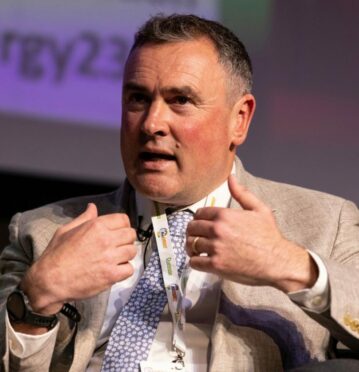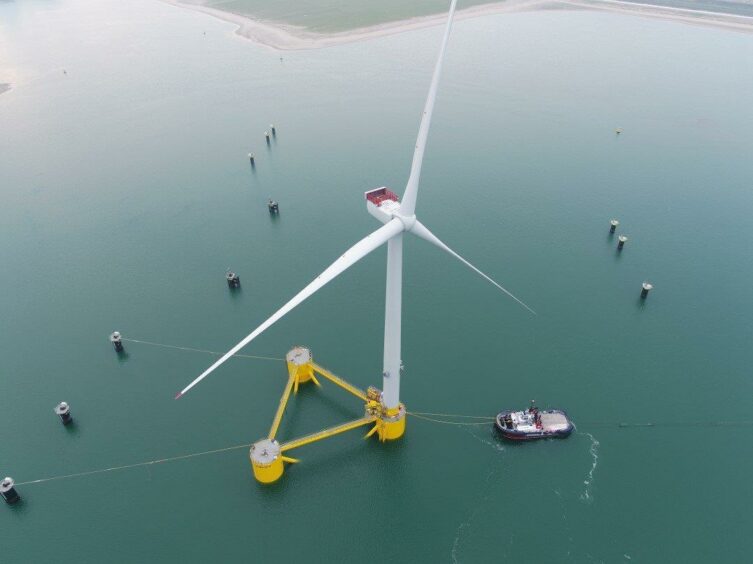The UK Government’s offshore wind champion has said it is a “national disgrace” that maintenance work on a flagship project off the north-east coast had to be done overseas.
Tim Pick, speaking during the All-Energy conference in Glasgow, added it was “embarrassing” that work to install and maintain the Kincardine floating wind farm was carried out abroad.
Completed in 2021, the 50-megawatt scheme consists of five floating Vestas turbines anchored about nine miles off the coast between Aberdeen and Stonehaven.
We call ourselves a maritime nation and yet we can’t do this stuff.”
Developers have battled against a series of technical issues at the site, and were last year forced to remove one of the turbines and tow it to Rotterdam in the Netherlands for a patch-up.
Mr Pick said: “I love the fact we have the world’s leading floating offshore wind farm.
“It’s brilliant and I bang on about it as much as anyone else.
“But the fact we couldn’t build it from here and can’t even fix it from here when it’s broken is, to my mind, a national disgrace.
“We call ourselves a maritime nation and yet we can’t do this stuff.”
Wind industry barometer
Mr Pick recently prepared a report on the health of the wind sector, with ports flagged as one area of concern in ensuring a sustainable future for the UK and its wind supply chain.
He told All-Energy delegates he hoped some of the findings would help “shame” ministers into taking the issue seriously.
“It’s embarrassing,” he said, adding: “We’re an island country, with loads of ports, but we don’t have the right ones. We need a special programme to really accelerate this.”
‘Decoupling’ port investment
Released in April, Mr Pick’s report found that grid access and a lengthy planning process are the major limiting factors in plans to expand offshore wind capacity.
Years of under-investment in network infrastructure, coupled with a massive ramp-up in renewables means grid constraints are becoming “a significant brake on wider economic activity, not just on offshore wind farms,” he said.
Reflecting on his findings at All-Energy, Mr Pick said ports would be the “absolute key enabler” for much of the UK’s wind activity in future.
£4bn port upgrade bill
Eleven ports around the UK are in need of upgrading at a cost of around £4 billion he said, adding investment was essential to the future of the wind sector.
He continued: “If you want these ports, which I think you need as it’s not like you can outsource this forever, especially with Europe going crazy for offshore wind as well, you need to decouple port investment from the wind projects.”
He suggested there may be a role for government to provide “some kind of capacity-type instrument” to help guarantee funding, which would allow ports to invest without worries around policy, offshore leasing rounds or the timing of major developments.
This would help provide a minimum floor of revenue to help “decouple port investment risk from the market risk of offshore wind”, he said.
Ardersier investment welcomed
He welcomed the recent £300 million investment at Ardersier, near Inverness, which he said may show industry is already bucking the trend.
Commercial-scale floating technology dominates Scottish offshore wind activity.
Mr Pick’s report highlights that for these projects alone three to five “integration ports” are needed by 2030.
Scotland now accounts for 72%, or 30 gigawatts, of seabed leases granted but not yet developed for offshore wind farms in the UK.


Conversation